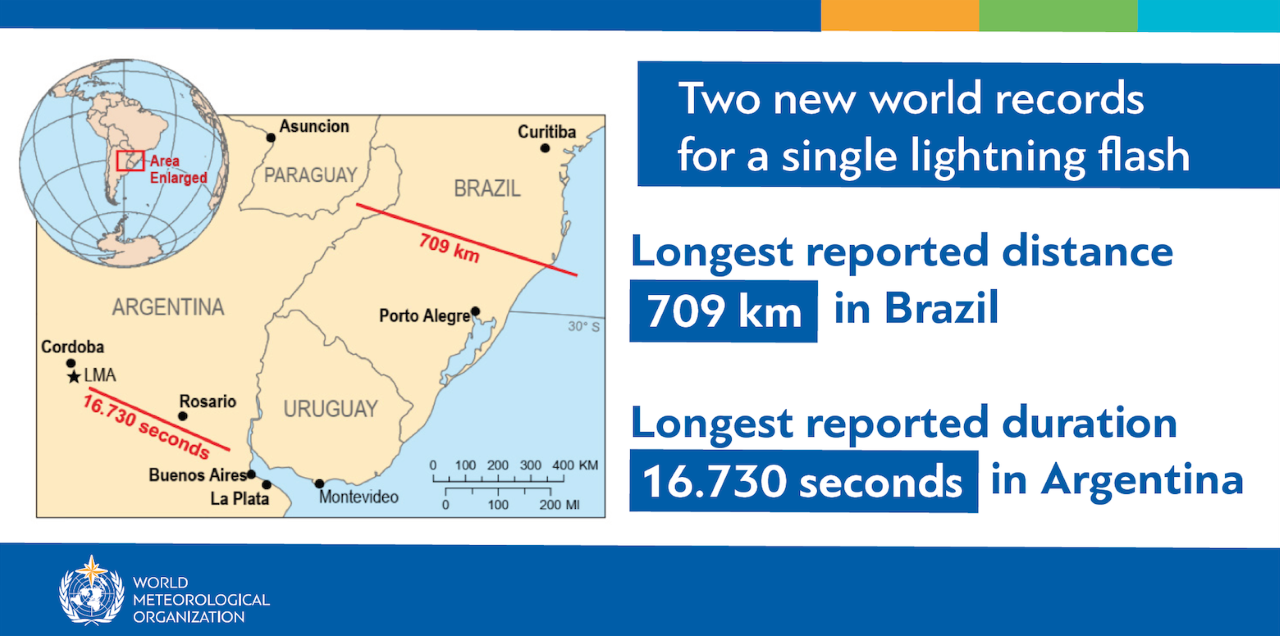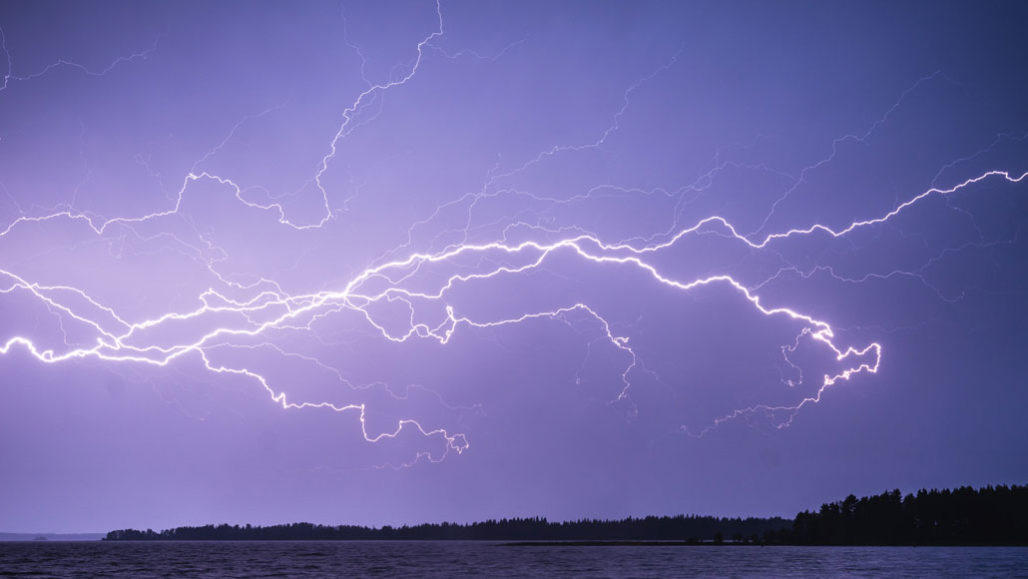
Ever heard of “megaflashes?” They’re ridiculously large, powerful, and scary flashes of lightning that can be seen for hundreds of miles, often lasting for multiple seconds at a time.
Quite an electrifying subject matter.
As of this week, the World Meteorological Organization has recognized two megaflashes which occurred in Brazil and Argentina as world records for longest reported distance and the longest reported duration for a single lightning flash in, respectively.
The World Meteorological Organization writes:
WMO has recognized two new world records for the longest reported distance and the longest reported duration for a single lightning flash in, respectively, Brazil and Argentina.
The new records for “megaflashes”, verified with new satellite lightning imagery technology, more than double the previous values measured in the United States of America and France. The findings were published by the American Geophysical Union’s Geophysical Research Letters ahead of International Lightning Safety Day on 28 June.
WMO’s Committee on Weather and Climate Extremes, which maintains official records of global, hemispheric and regional extremes found that:
The world’s greatest extent for a single lightning flash is a single flash that covered a horizontal distance of 709 ± 8 km (440.6 ± 5 mi) across parts of southern Brazil on 31 October 2018. This is equivalent to the distance between Boston and Washington DC or London and the Swiss border.
The greatest duration for a single lightning flash is 16.73 seconds over northern Argentina on 4 March 2019.
This new findings provide valuable information for establishing limits to the scale of lightning – including megaflashes – for engineering, safety and scientific concerns.
Details https://bit.ly/2YxFSLl
